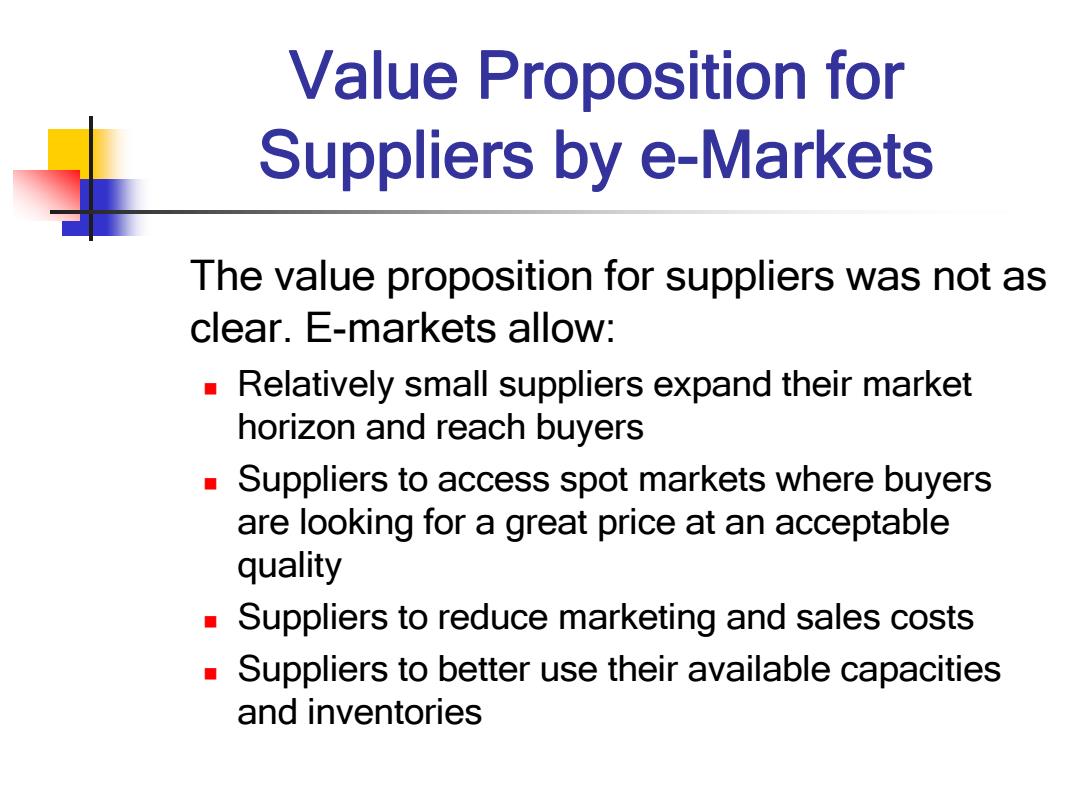
Value Proposition for Suppliers by e-Markets The value proposition for suppliers was not as clear.E-markets allow: Relatively small suppliers expand their market horizon and reach buyers Suppliers to access spot markets where buyers are looking for a great price at an acceptable quality Suppliers to reduce marketing and sales costs Suppliers to better use their available capacities and inventories
Value Proposition for Suppliers by e-Markets The value proposition for suppliers was not as clear. E-markets allow: Relatively small suppliers expand their market horizon and reach buyers Suppliers to access spot markets where buyers are looking for a great price at an acceptable quality Suppliers to reduce marketing and sales costs Suppliers to better use their available capacities and inventories
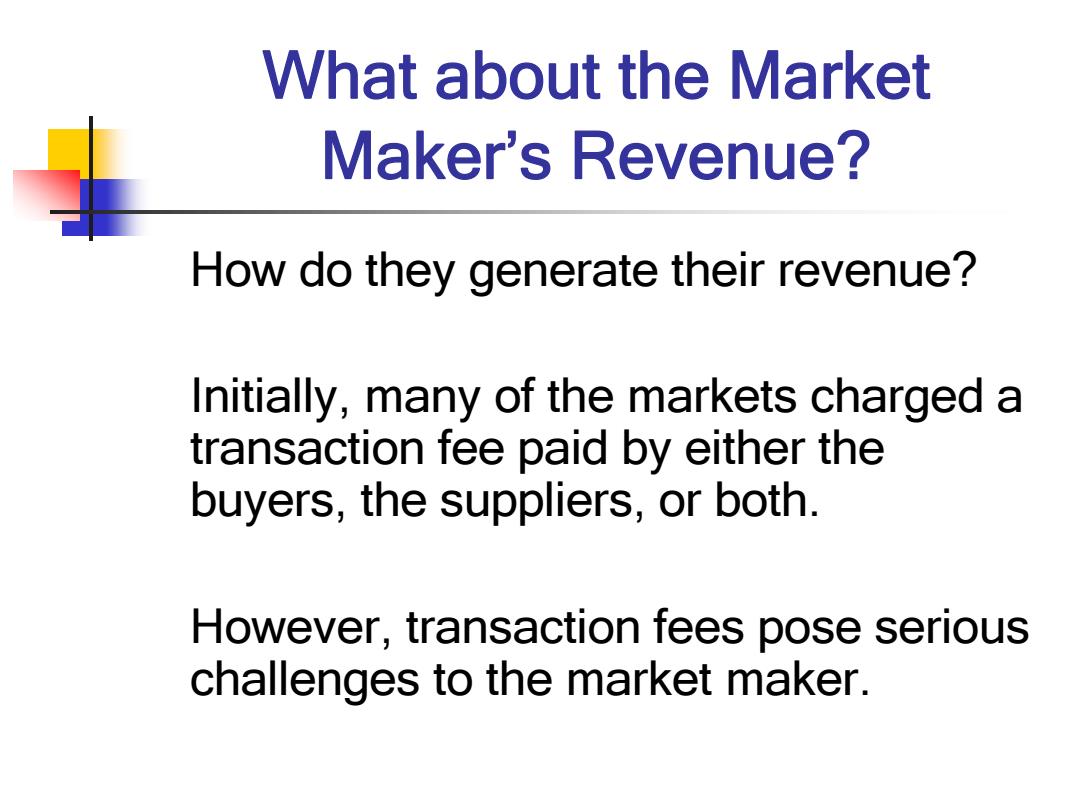
What about the market Maker's Revenue? How do they generate their revenue? Initially,many of the markets charged a transaction fee paid by either the buyers,the suppliers,or both. However,transaction fees pose serious challenges to the market maker
What about the Market Maker’s Revenue? How do they generate their revenue? Initially, many of the markets charged a transaction fee paid by either the buyers, the suppliers, or both. However, transaction fees pose serious challenges to the market maker
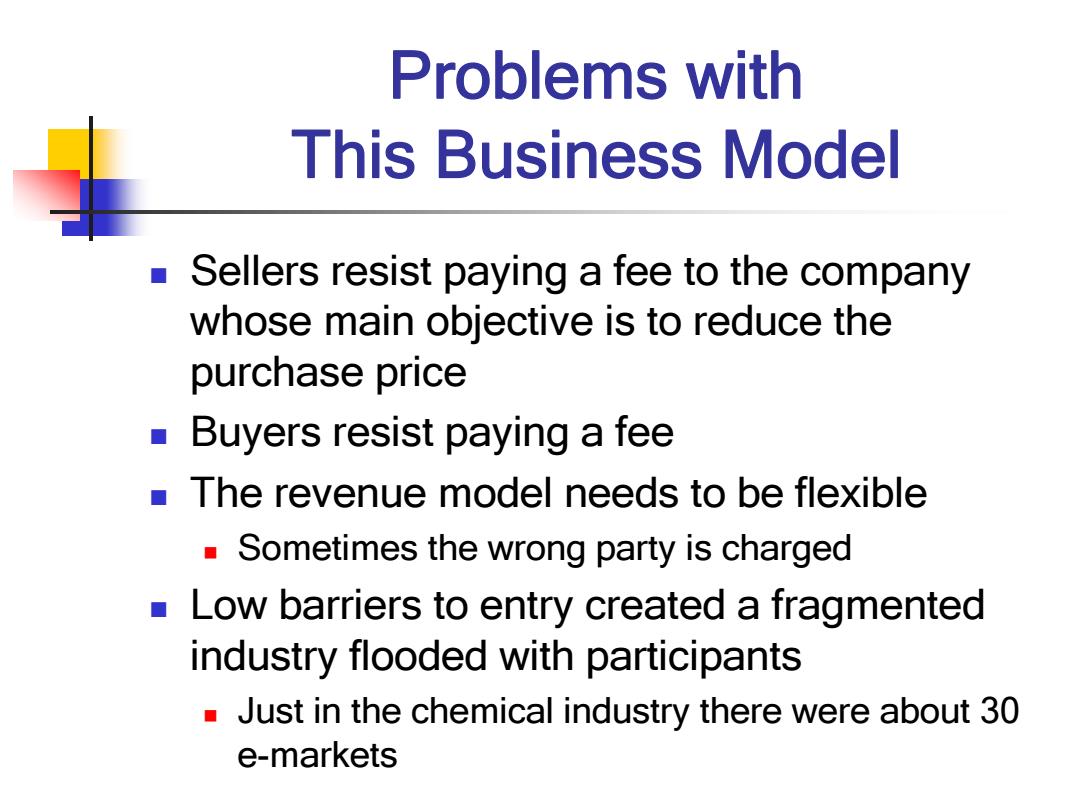
Problems with This Business Model Sellers resist paying a fee to the company whose main objective is to reduce the purchase price Buyers resist paying a fee The revenue model needs to be flexible Sometimes the wrong party is charged Low barriers to entry created a fragmented industry flooded with participants Just in the chemical industry there were about 30 e-markets
Problems with This Business Model Sellers resist paying a fee to the company whose main objective is to reduce the purchase price Buyers resist paying a fee The revenue model needs to be flexible Sometimes the wrong party is charged Low barriers to entry created a fragmented industry flooded with participants Just in the chemical industry there were about 30 e-markets
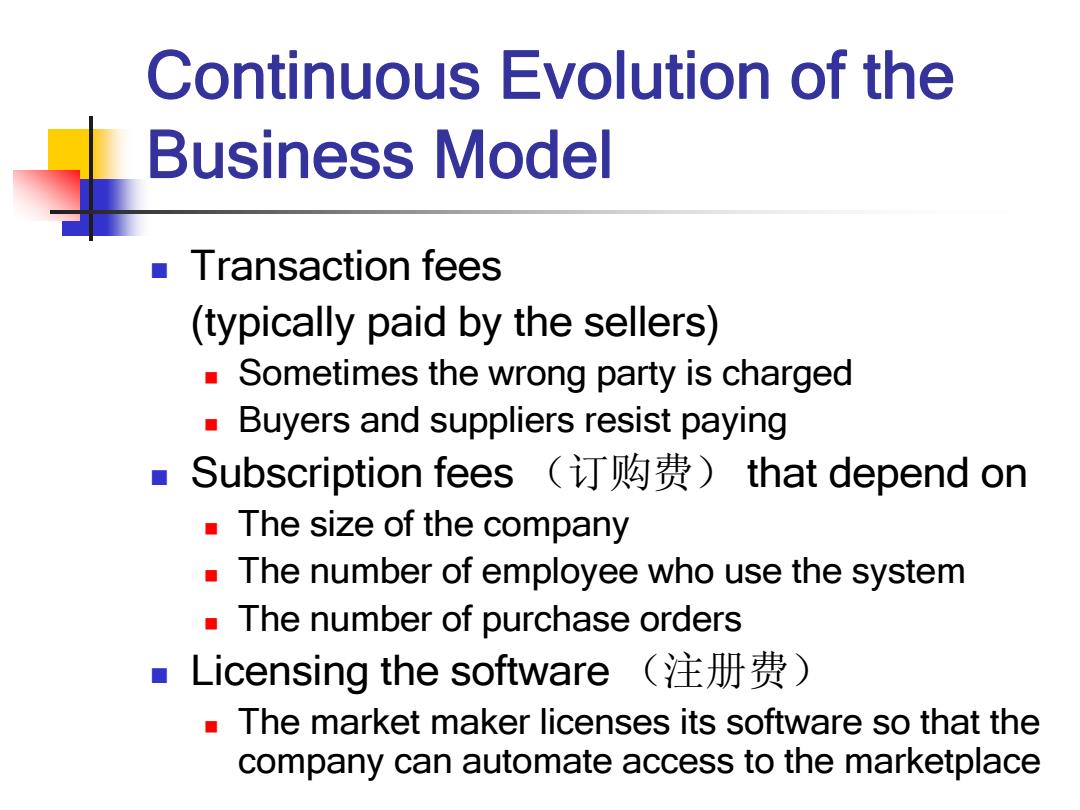
Continuous evolution of the Business Model ■Transaction fees (typically paid by the sellers) Sometimes the wrong party is charged Buyers and suppliers resist paying Subscription fees(订购费)that depend on The size of the company The number of employee who use the system The number of purchase orders ■Licensing the software(注册费) The market maker licenses its software so that the company can automate access to the marketplace
Continuous Evolution of the Business Model Transaction fees (typically paid by the sellers) Sometimes the wrong party is charged Buyers and suppliers resist paying Subscription fees (订购费) that depend on The size of the company The number of employee who use the system The number of purchase orders Licensing the software (注册费) The market maker licenses its software so that the company can automate access to the marketplace
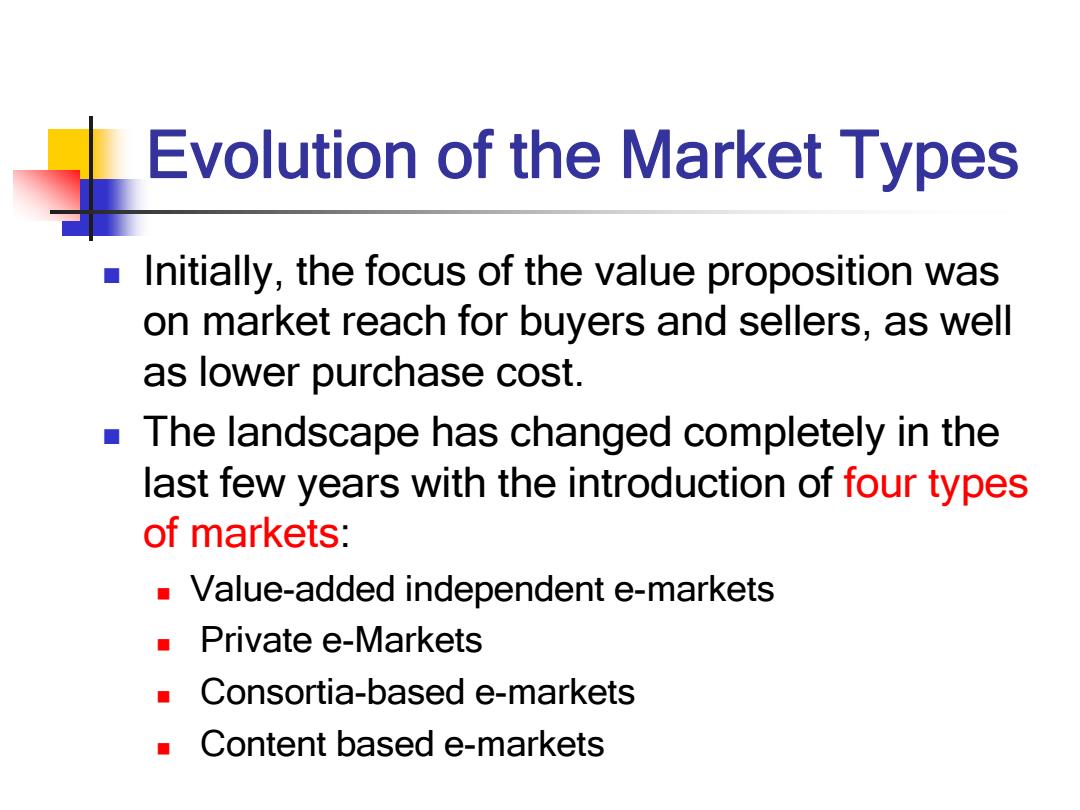
Evolution of the Market Types Initially,the focus of the value proposition was on market reach for buyers and sellers,as well as lower purchase cost. The landscape has changed completely in the last few years with the introduction of four types of markets: Value-added independent e-markets Private e-Markets Consortia-based e-markets Content based e-markets
Evolution of the Market Types Initially, the focus of the value proposition was on market reach for buyers and sellers, as well as lower purchase cost. The landscape has changed completely in the last few years with the introduction of four types of markets: Value-added independent e-markets Private e-Markets Consortia-based e-markets Content based e-markets